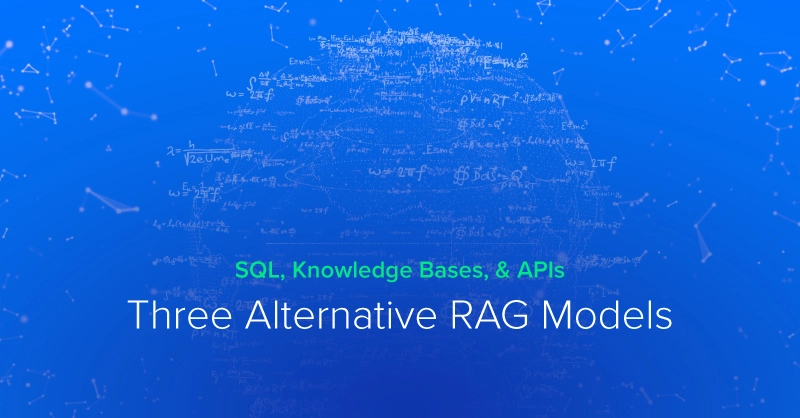
Today we'll compare the NVLink Bridge for the New NVIDIA Quadro RTX, and the previous generation NVIDIA Quadro GV100 graphics cards. There are some major differences here, so be sure to pay attention!
Probably the most stark difference is the fact that the RTX only has 1x NVLink bridge, as where the older Volta Quadro GV100 has two. As where the top of the link Quadro RTX 8000/6000 has a maximum bandwidth of 100 GB/s, the older Quadro GV100 having two bridges, effectively allowing for a maximum bandwidth of 200 GB/s! Furthermore, on the lower end Quadro RTX 5000, the maximum bandwidth is (only) 50GB/s, half that of the higher end RTX cards.
Quadro NVLink Comparison
Concise Look (Turing & Volta Architecture)
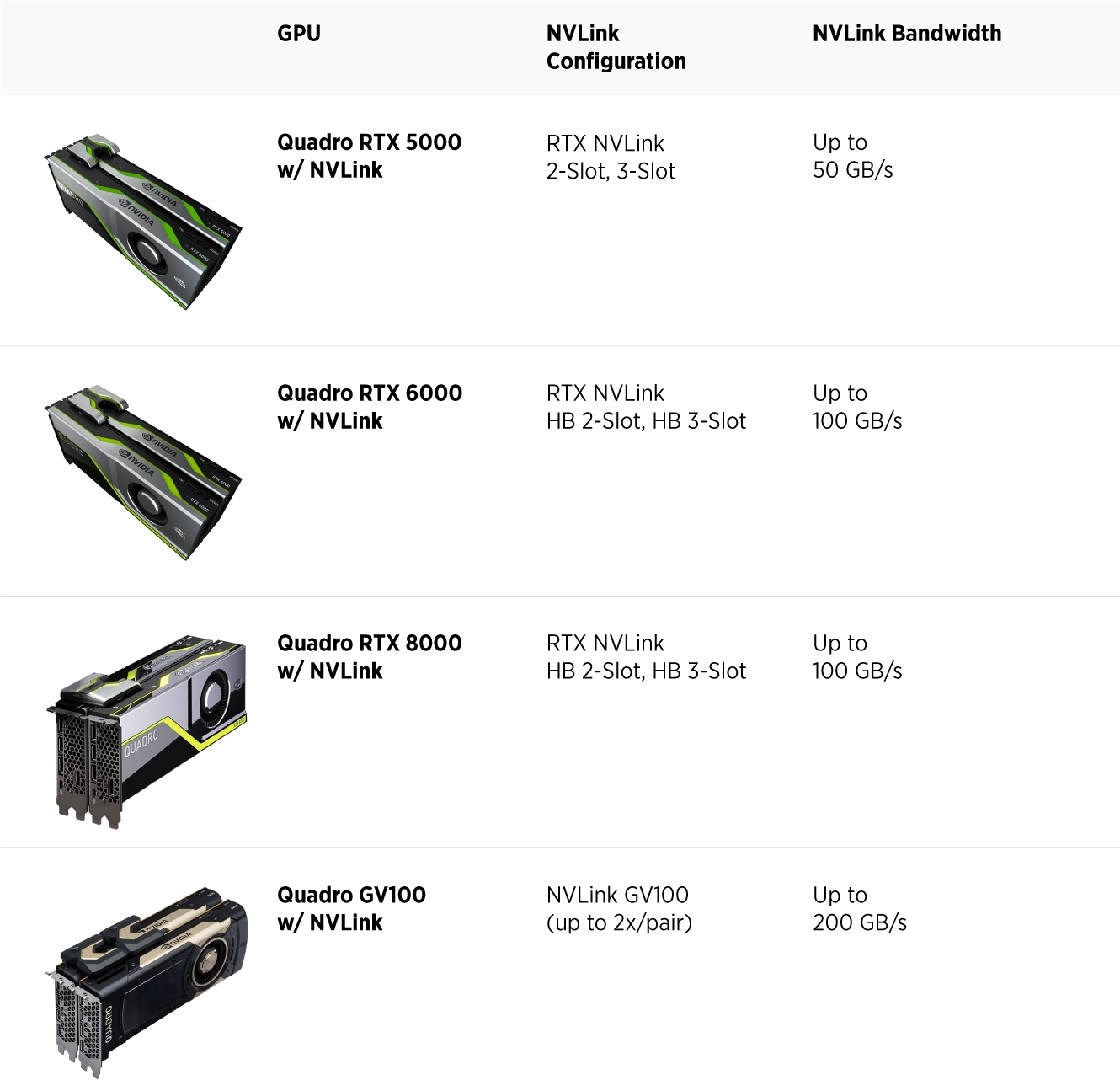
A Visual Representation of Quadro NVLink Bridges
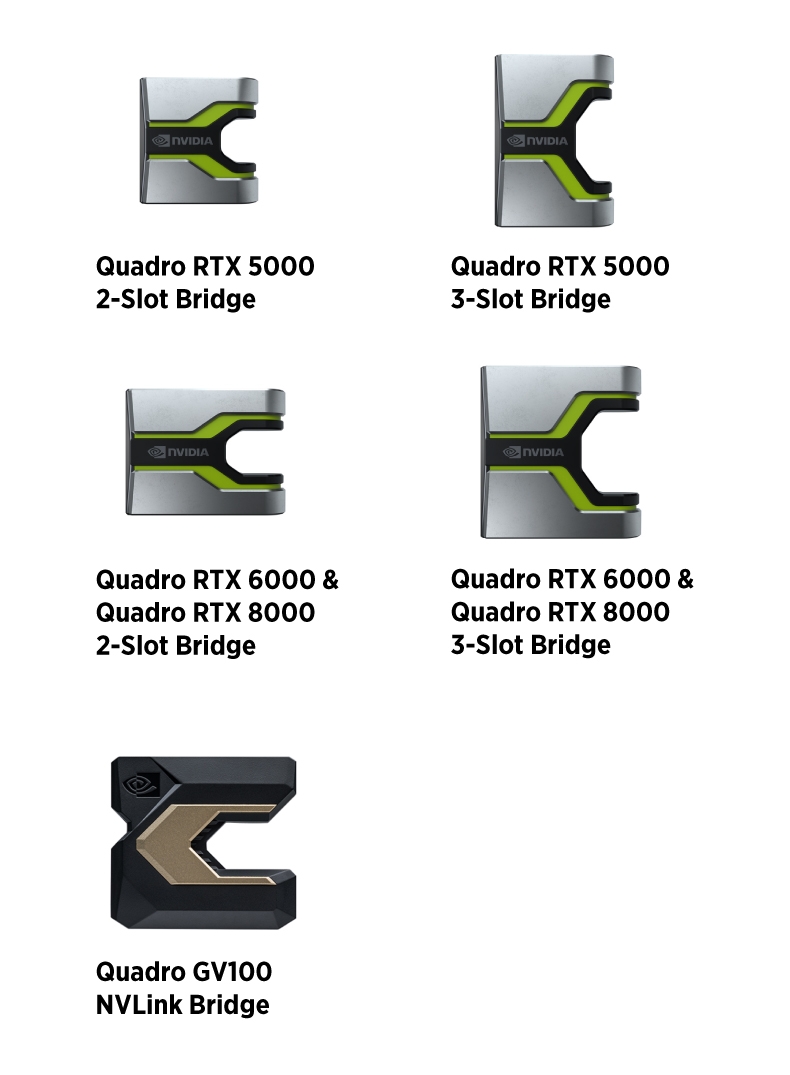
How Quadro NVLink Bridge Fits in a Multi GPU System
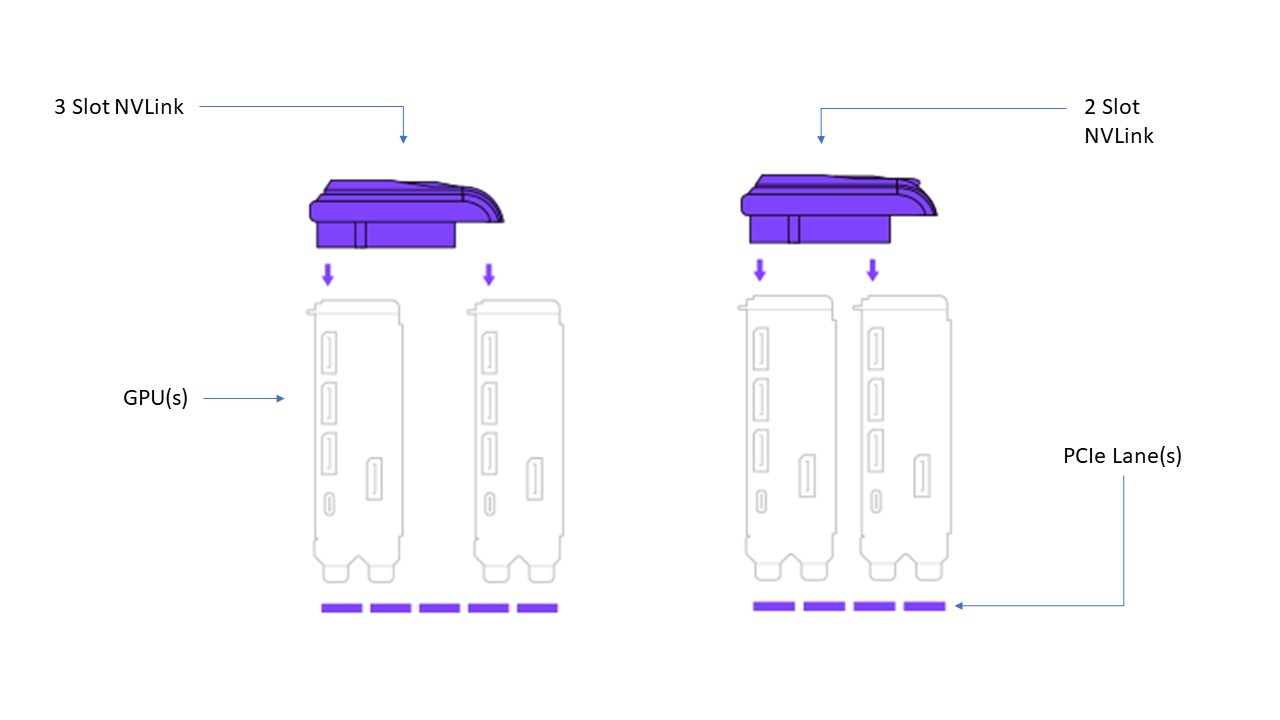
So Which NVLink Configuration Is Better?
This is a subjective question, and many factors need to be taken into consideration. It would appear that the NVLink from the Quadro GV100 is superior, because it allows for two NVLink Bridges, effectively fusing two physical boards into one logical entity with 10240 CUDA cores, 1280 Tensor cores, and 64 GB of HBM2 GPU memory, with a bidirectional bandwidth of 200 GB/s.
However, if you want to use the latest features of the Turing Architecture, complete with Ray Tracing Cores and other features, you may opt for the new Quadro RTX Cards. On the other hand, if you wanted to use visualization + heavy compute between 2 GPUs, you could use visualization apps/functionality of such programs as ANSYS. Running a multi-GPU compute job with a shared model (model split and loaded between 2 GPUs because it’s too large to fit into one GPU memory), you'd effectively get double the bandwidth with lower latency. This is something to consider, and at Exxact we may conduct some performance benchmarks for the different GPUs in the future.

Full Specs Comparison for Quadro RTX 5000, 6000, 8000, and GV100
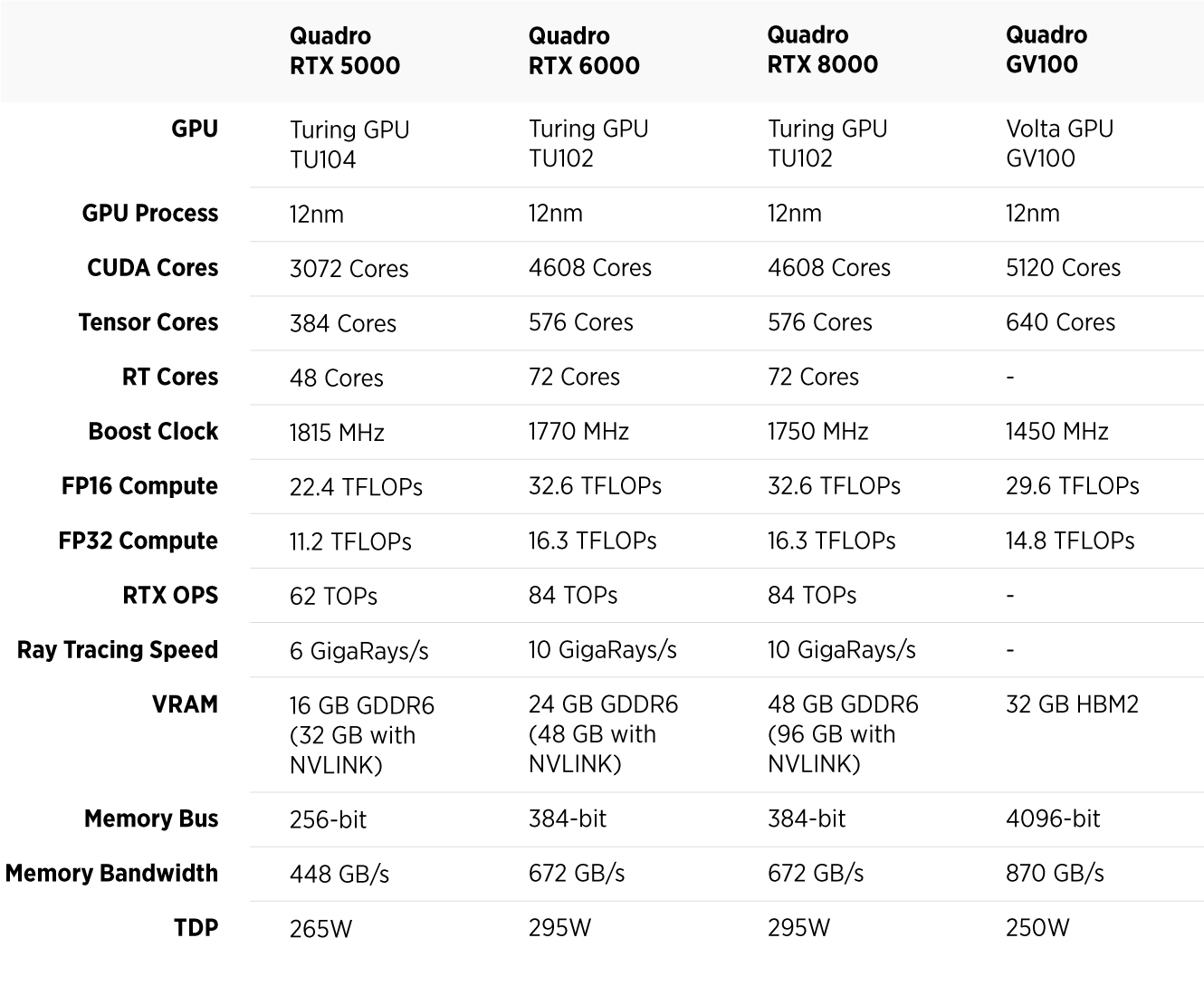
Have any questions? Contact us directly here.

NVLink Bridge Comparison: Quadro RTX vs. GV100 -- What's the Difference?
Today we'll compare the NVLink Bridge for the New NVIDIA Quadro RTX, and the previous generation NVIDIA Quadro GV100 graphics cards. There are some major differences here, so be sure to pay attention!
Probably the most stark difference is the fact that the RTX only has 1x NVLink bridge, as where the older Volta Quadro GV100 has two. As where the top of the link Quadro RTX 8000/6000 has a maximum bandwidth of 100 GB/s, the older Quadro GV100 having two bridges, effectively allowing for a maximum bandwidth of 200 GB/s! Furthermore, on the lower end Quadro RTX 5000, the maximum bandwidth is (only) 50GB/s, half that of the higher end RTX cards.
Quadro NVLink Comparison
Concise Look (Turing & Volta Architecture)

A Visual Representation of Quadro NVLink Bridges

How Quadro NVLink Bridge Fits in a Multi GPU System

So Which NVLink Configuration Is Better?
This is a subjective question, and many factors need to be taken into consideration. It would appear that the NVLink from the Quadro GV100 is superior, because it allows for two NVLink Bridges, effectively fusing two physical boards into one logical entity with 10240 CUDA cores, 1280 Tensor cores, and 64 GB of HBM2 GPU memory, with a bidirectional bandwidth of 200 GB/s.
However, if you want to use the latest features of the Turing Architecture, complete with Ray Tracing Cores and other features, you may opt for the new Quadro RTX Cards. On the other hand, if you wanted to use visualization + heavy compute between 2 GPUs, you could use visualization apps/functionality of such programs as ANSYS. Running a multi-GPU compute job with a shared model (model split and loaded between 2 GPUs because it’s too large to fit into one GPU memory), you'd effectively get double the bandwidth with lower latency. This is something to consider, and at Exxact we may conduct some performance benchmarks for the different GPUs in the future.

Full Specs Comparison for Quadro RTX 5000, 6000, 8000, and GV100

Have any questions? Contact us directly here.


